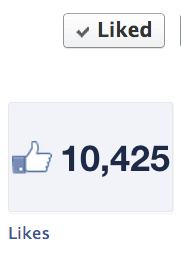Checking the Online Pulse: Sentiment Analysis for Politics and Participation

Online sentiment analysis -- measuring the pulse of what is being said about a brand, an idea, a position, or a person online -- provides an interesting and quick (albeit non-scientific) pulse of the 'vox populis' in so far as that voice uses social media. Using adjectives used with a specific term (such as love, hate, like, loathe, etc.), sentiment analysis tools scan public tweets, blog posts, or other available online media to mine for these keywords and a sense of the how a public audience feels about it. We were curious about how this might apply to our work in politics and for democracy support. Here is what we found.
1. Sentiment analysis is far from perfect or often even accurate. Algorithms cannot distinguish between nuanced usages of words ("No way am I voting for Obama" vs. "No way! Obama has a new app! So cool!") nor can they detect sarcasm. Additionally, Pew Research, an American research institute focused on polling analysis, conducted research showing that for large public opinion polls, Twitter tends to skew either towards liberal or conservative ends, making the world look more polarized than it is. Sentiment analysis and online digital media monitoring needs to take into consideration he unrepresentative nature of an online audience (wealthier, more male, younger) and account for that. Pew researchers also point out in a recent study that out those "who comment on Twitter about news events the to share their opinions on subjects that interest them most;, whereas national surveys ask questions of a random sample [of Americans], regardless of their personal engagement on the issues." For a great, critical and nuanced article on how news media is using sentiment analysis about poltics, read this Niemann Lab piece.
2. However, online sentiment of the audience that is already online has been used for years to predict how markets will act and to monitor brand perception. Certain companies patrol social media to respond to user requests, questions, and concerns with timely responses. The same methodology of can be used for our line of work as well - that of democracy support. Umati, for instance, scanned social media for specific keywords that suggested online hate speech in Kenya prior to the contest election there. Likewise, targeting specific groups can be used to fundraise from a particular audience, or to rally interest around a specific issue.
In a recent article in the American political magazine Campaigns and Elections, the authors described the problem as follows:
Campaigns lack a social media tool that accurately accurately measures the quality of the conversations and until they have one, there is no way to tell if online messages move the needle. Facebook has its insights and Twitter has its Analytics, but what metric is there for knowing where people stand on an issue and how to engage them?
During the last American presidential election, the Annenberg School at the University of Southern California analyzed Twitter for attitudes about the candidates. While the project is now offline, the methodology was interesting. The researchers noted:
Our sentiment analysis model aims to overcome the limitations of other models, which adopt simple binary classification of words or phrases. Our approach analyses the correlational weight of each word with each emotion category -- including positive, negative, neutral and unsure classes -- to allow better modeling of objective tweets and tweets that are difficult to classify. We have trained our sentiment model on human annotation of large amounts of political tweets using Amazon Mechanical Turk, which provides data to validate the predicted sentiment. Our approach aims to develop a better understanding not just of positive and negative political sentiment, but also of sarcasm, with the power to gauge in real-time public sentiment to breaking news, political debates and other dynamic phenomena.
3. We've looked at lots of online sentiment analysis tools recently, and created a spreadsheet with tools we found of interest. Most of the free tools analyze Twitter sentiment as that data is much more readily available for analysis. Most analyze only English content as well - we are keen to find those looking at content in languages other than English. To give you an idea of what a few of these tools can do (and there the limitations are), here are five.
- Social Mention - Pulls in reports from multiple sources, including Twitter, Facebook, YouTube, Flickr, and others. Social Mention provides a running stream of the actual content posted, along with top keywords and downloadable content. It also provides information on users that post most often. Not strictly a sentiment analysis tool, however.
- SteamCrab - If you are bigger fan of graphs, turn towards SteamCrab. They provide a line charts, pie charts, and the actual Tweets that are used in the mining.
- Tweet Tone - For those visual learners among us, there is Tweet Tone, which provides different types of smiley faces to depict the sentiment surround topics of your choice.
- TweetViz - This tool provides a wider range of "emotions" than other sites, and places them along two axes, one describing pleasant versus unpleasant, and the other describing how strong the sentiment is.
- Twistori - For a fun little *twist*, check out this site that searches for one of six terms (love, hate, think, believe, feel, and wish) and displays them in an interesting interface.
Did we miss any? Leave a comment here or find us on Facebook or Twitter.
